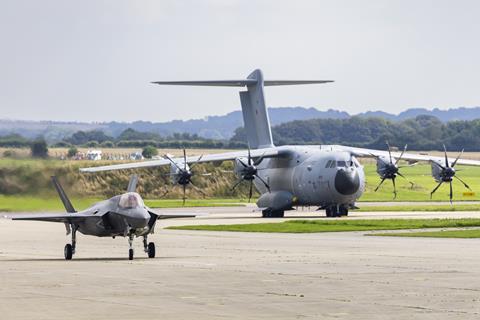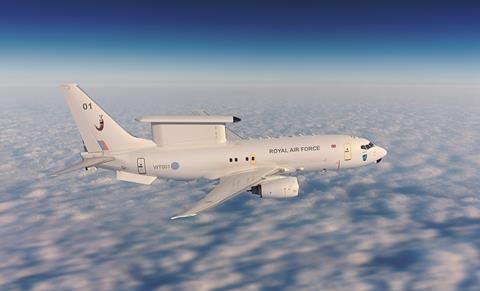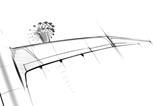Defence chiefs have left the UK “dangerously exposed” through a series of misguided equipment decisions – in one case branded “irrational” and “perverse” – which have created “unacceptable” capability gaps for the Royal Air Force (RAF), a cross-party group of MPs has warned.
Detailing the issues in its 10 September report – Aviation Procurement: Winging it? – the House of Commons Defence Select Committee found numerous issues with the Ministry of Defence’s (MoD’s) decision-making, in which front-line capability was sacrificed for short-term cost-savings.

“The MoD’s acceptance of capability gaps and its cuts to combat mass across the fleet have left the UK dangerously exposed at a time of increasing threat to national security and risk diminishing our role within NATO,” the report states.
It calls for an urgent change of course to reverse several of the most egregious decisions and safeguard the Royal Air Force’s (RAF’s) ability to “successfully deter and defend against enemy aggression”.
The report examines four key topics: a sharp reduction in the size of the RAF’s combat aircraft fleet; the premature retirement of its Lockheed Martin C-130J tactical transports; the scaling back of the purchase of Boeing E-7A Wedgetails – cutting it from five to three aircraft; and persistent issues with fast-jet training.
Those policies were contained in the MoD’s 2021 Defence Command Paper which “made significant cuts to the UK’s air power capabilities”, the report says.
But Russia’s invasion of Ukraine less than one year later, “brought the implications of these cuts into sharp focus”, it adds. “Despite this, July’s Defence Command Paper Refresh did not reverse any of the 2021 cuts.”
Opting to retire the RAF’s Tranche 1 Eurofighter Typhoons by 2025 on cost grounds, plus ambiguous commitments around the eventual size of the Lockheed F-35 fleet – and the slow pace standing that fleet up – have left the service with “a boutique high capability” which “lacks numerical depth and has an inadequate attrition reserve”, the report says.
While this “exquisite capability has its place”, the “combat mass” should not be sacrificed to achieve that, it says.
“The Defence Command Paper cuts will create a combat air capability gap which, on current plans, will persist well into the 2030s. This is unacceptable,” the report says.
“The MoD and RAF must consider as a matter of urgency how they can increase combat air mass in the short term.”
In particular, the Tranche 1 Typhoons should be mothballed rather than disposed of to create an operational reserve, the committee recommends; and planned sensor and weapons upgrades to the in-service fleet should “be delivered at pace”.
Additionally, the MoD “must be transparent and realistic” about the eventual size of the F-35 fleet – including a recognition that deferring the decision on future orders until the middle of the decade risks harming UK industry.

The report is especially scathing about the decision to trim the size of the E-7A Wedgetail buy, calling the move “irrational”.
Although the RAF has identified savings related to the lower sustainment costs of a smaller fleet, the committee points out that the cost of each aircraft has now risen to £630 million ($785 million) from £431 million previously. Currency fluctuations versus the US dollar have also added 15% to the cost, it adds, giving a total acquisition of £1.89 billion for three aircraft, versus £2.15 billion for five.
“Thus, whilst the fleet size has been slashed by 40%, acquisition costs have reduced by just 12%,” it says, describing the reduced order as “extremely poor value for money” and “perverse”.
“The cost savings which the MoD cited to justify this cut are disproportionate to the significant reduction in capability which it will entail, and the department must reverse this irrational decision at the earliest possible opportunity,” the committee says.
“The decision to reduce the Wedgetail fleet must be revisited at the earliest possible opportunity with a renewed commitment to a fleet of at least five aircraft.”
The MoD had already decided to tolerate a capability gap though the 2021 retirement of the RAF’s Boeing E-3D Sentry airborne early warning and control aircraft, two years before the first Wedgetail was due to be delivered. However, that date has now slipped to 2024.
That capability gap “presents a serious threat to the UK’s warfighting ability”, the report notes.
Another similar capability gap was created by the early retirement – in June this year – of the RAF’s C-130J Hercules fleet. Advancing the out-of-service date by seven years represented a saving of £1.83 billion over the 2021-2035 period, the report says, but which “has significantly reduced the overall capacity of the air mobility fleet [and] undermined the [2021] Integrated Review’s ‘Global Britain’ objective, and created a capability gap which could hamper special forces”.
Instead, the RAF has been “left scrambling” to migrate capabilities onto the Airbus Defence & Space A400M Atlas. While acknowledging the transport’s capabilities, the committee also points to its “poor track record of reliability”, particularly of its Europrop International TP400 engines.
The committee was also critical of the throughput of pilots generated by the UK’s Military Flying Training System run by Lockheed and Babcock joint-venture Ascent Flight Training.

Figures provided by the MoD showed that the number of pilots “holding” – waiting to be allocated a place on a more specialised stream – following their elementary flying had increased four-fold over the three years from October 2019, from 40 to 161; the number of fast jet pilots on hold had risen from seven to 51, it adds.
“Persistent and unacceptable delays in the flying training pipeline mean that pilots are waiting years to qualify, with serious implications for morale and for the effectiveness of our armed forces,” the report adds.
RAF leaders had indicated that delays were partly a knock-on effect of the reduction in frontline aircraft, reducing the places available to crews.
But the committee felt this could have been better handled. “Changes to the number of frontline seats are a routine feature of defence reviews.
“Whilst they will unavoidably have some impact on the training pipeline, this must be managed so that any consequential backlogs are minimal.
“A flying training model which cannot adapt to changed crewing requirements without introducing years of delay for pilots is clearly not fit for purpose,” it adds.
Compounding the disruption to training is the reduced availability of the RAF’s BAE Systems Hawk T2 jet trainer fleet. The durability of the type’s Rolls-Royce/Safran Adour engines has seen daily flying hours slashed from 55 to just 18.
As a result, UK pilots have been sent overseas for training at an additional cost of £55 million. However, the MoD’s contracts with industry contain no provision for it to recoup those costs.
In other words, contractors “face no financial penalty” for their under-performance, the committee says, which is “a farcical situation which only underlines the requirement for the MoD to better resource its legal and commercial teams”.
In addition, the committee has called on the RAF to review its ambition to transition to a model where 80% of training will be synthetic by 2040, warning that it is concerned this “will be sub-optimal for both pilots and ground crew”.































